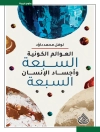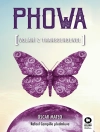A Treatise on White Magic is a book by Alice Bailey. It is considered to be among the most important by students of her writings, as it is less abstract than most, and deals with many important subjects of her works in an introductory, even programmatic fashion. Bailey promulgated White Magic as a discipline to serve humanity. It is an esoteric text, which Bailey said was dictated telepathically by the Tibetan Master, Djwal Khul. It is offered as a ‘basic textbook’ for the Western aspirant to initiation, and is divided into fifteen rules of magic, each one taking the reader further into the mysteries of spirituality. Topics discussed include: how an aspirant can best prepare himself for service, the various ray types of their influences, the relationship between the macrocosm and microcosm, the spiritual, causal, astral and physical realms and their interactions, the spiritual psychology of man, The Hierarchy of Masters, esoteric groups and schools, the spiritual centers (or chakras), the occult concept of the Seven Rays, meditation work and much more. One of the main themes is that of soul control.
Giới thiệu về tác giả
Alice Bailey (1880-1949) was a writer of more than twenty-four books on theosophical subjects, and was one of the first writers to use the term New Age. Bailey was born in England, but she moved to the United States in 1907, where she spent most of her life as a writer and teacher. Bailey’s works, written between 1919 and 1949, describe a wide-ranging system of esoteric thought covering such topics as how spirituality relates to the Solar System, meditation, healing, spiritual psychology, the destiny of nations, and prescriptions for society in general. She described the majority of her work as having been telepathically dictated to her by a Master of Wisdom, initially referred to only as ‘the Tibetan’ or by the initials ‘D.K.’, later identified as Djwal Khul.












